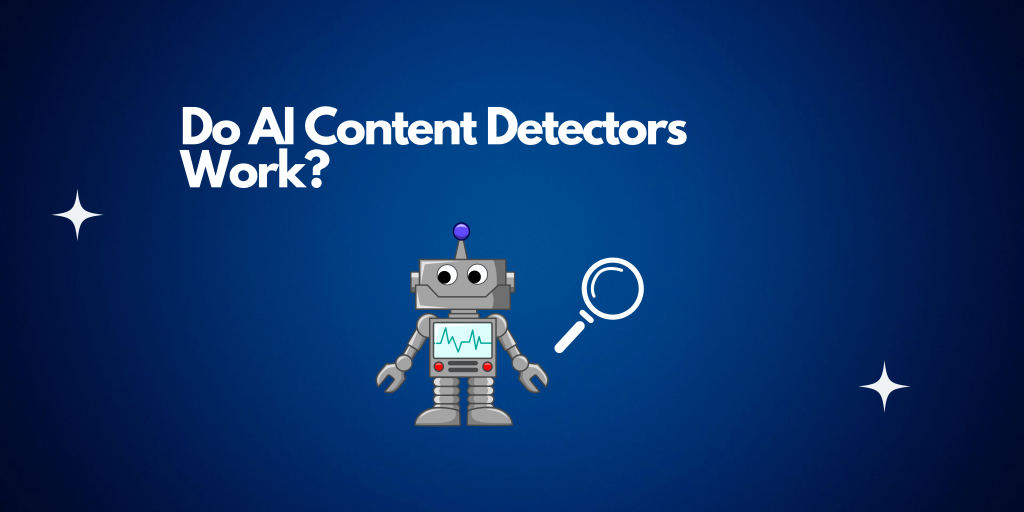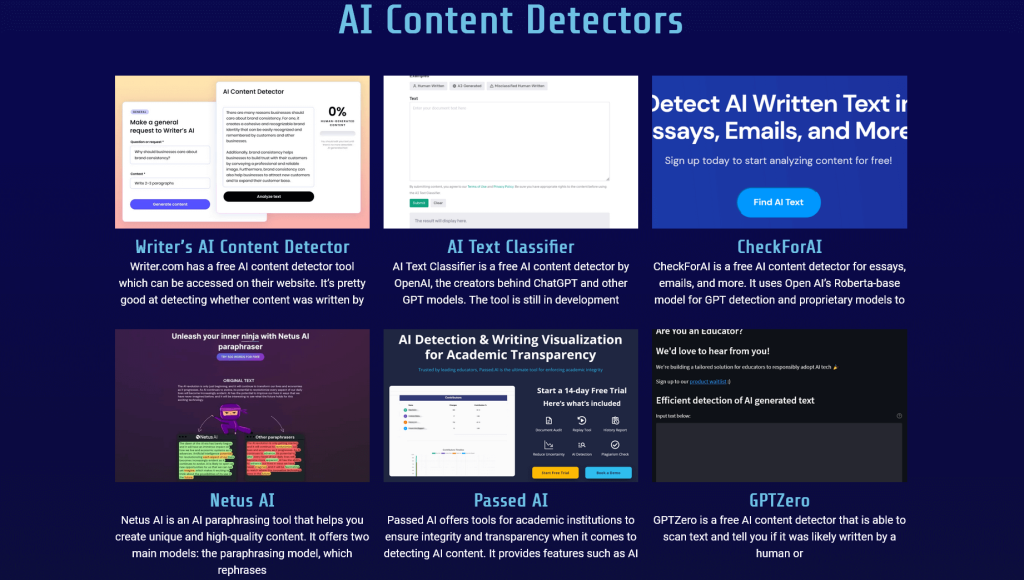
In the current stage of advanced AI models, distinguishing between AI-generated and human-written content can be challenging. To an inexperienced reader, AI-created text can appear indistinguishable from authentic human writing. This raises the question of how one can detect whether a given text is generated by AI or written by a human. Fortunately, AI content detectors have emerged to address this challenge. These tools employ various techniques and detection methods to determine the origin of a text, whether it is AI-generated or authored by a human. But do AI content detectors actually work? In this article, we will go over exactly how AI content detectors work, and whether they are accurate enough to be relied upon.
How Do AI Content Detectors Work?
AI content detectors utilize different approaches to identify AI-generated text. The main detection methods can be categorized into two groups:
1. Linguistic Analysis
Linguistic analysis involves examining the characteristics of a text to identify AI-generated content. AI-generated text often exhibits traits such as a lack of formulaic language and repetition. By analyzing text for these specific things, the AI content detector can often give a general baseline answer on how likely it was written by an AI.
ChatGPT has a prime example of this. If you use the chatbot regularly, you may have already noticed that it has an extreme tendency to finish its final paragraphs with “Futhermore” or “In conclusion”. While these phrases aren’t grammatically incorrect, when they are overused it can be pretty obvious to tell when a piece of text was AI-generated.
2. Comparison with Known AI-Generated Text
Another approach employed by AI content detectors is comparing a given text with known instances of AI-generated content. If a text resembles previously identified AI-generated text, it may indicate that the new text is also AI-generated. This method on its own is not the best for discovering AI content, but combined with the above method, the two can provide a fairly good result.
Here are some examples of things that an AI content detector might analyze within text:
- Burstiness: Burstiness refers to the variation of sentences and the usage of different words throughout the text. As we already mentioned, AI-generated text often exhibits repetitive patterns, whereas human-written text tends to have more diversity. Analyzing burstiness can greatly help identify instances of AI-generated content.
- Spelling & Grammar: Spelling and grammar plays a vital role in detecting AI-generated content. It is extremely unlikely, almost impossible, for an AI language model to write with incorrect spelling (unless you ask it to, of course!). Likewise, AI often has very good grammar and punctuation, although it can be repetitive. If a text has several spelling mistakes, most AI content detectors will flag it as human-written.
- Perplexity: In AI content detection, perplexity is another important factor which the AI utilizes to detect for AI written content. Perplexity, put simply, is the grade of writing and how well it has been written. Lower perplexity can suggest AI-generated text. However, a perplexity that is too high can also sometimes indicate AI-generated text. This is where a lot of AI content detectors will react differently, some might flag high perplexity text, whereas others will state it is human-written.
- Key words: Some AI detectors will look for specific key words that are likely to be used by an AI language model. These are often overly-complex words which are unlikely to be used in the real world, outside of academic purposes. This metric on its own is not a reliable way to check for AI-generated content, but it does work well when combined with other methods.
Are AI Content Detectors Accurate?
Now’s time for the important question, its on everyone’s mind and most likely the main reason you are here: do these AI content detectors actually work? Are they reliable? Well, it’s complicated…
AI content detectors are getting more accurate over time, but at the same time, the AI language models are getting more complex. This poses a big threat for the reliability AI content detectors. Most popular chatbots and text generators currently available, while powerful, do often make mistakes when it comes to writing like a human would. This gives AI content detectors an edge and specific things to look for.
But what happens when these AI chatbots and language models get too complex? When they discover how to write exactly as a human would? This is difficult to answer, and the truth is, no one really knows just yet. Many people currently manage to edit AI-generated content manually to get it to pass AI-detection checks. What happens when we can just ask the AI to do that editing for us? This is where some people are skeptical towards AI as a whole, and it is a valid concern.
How to Pass AI Content Detectors
Many of you are probably wondering, just how do you actually pass these AI content detectors? At the moment, it’s actually pretty straight-forward.
Firstly, you will need to edit out any overly repetitive words and phrases. Next up, you should obviously remove any phrases which are a blatant giveaway that it was AI-generated (as an AI language model, etc). Ideally, you’ll also want to restructure the content slightly, as AI often tends to write extremely long paragraphs which are not reader-friendly. You should try to make your text easy to read and follow, and not too complex.
As we mentioned earlier, AI barely ever writes with formulaic language! If you simply edit some of your text to include formulaic language, you will likely be able to pass AI content detectors. This, combined with the other practices we’ve mentioned, should give you the edge, for now. As these detection tools and methods get more and more advanced, we predict that it will get more difficult.
We hope this article has been helpful in some way. If you’re unsure of which AI content detector to use, you can check out our full category of AI content detectors.




